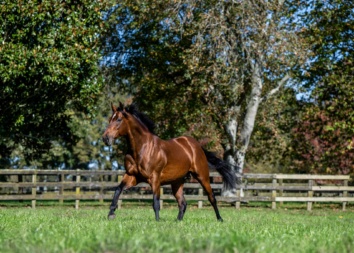The Corner with Garry Chittick

Well, it’s taken a while, but it seems appropriate to comment on Colm Santry’s article on Australasian breeding trends (click here to read).
I have been doing this a long time, breeding horses that is, and to be fair the last 60 years has only reinforced my view that attempting to breed money has always coloured the view of a number of breeders.
Sure, when I first became more seriously involved, many incremental changes have occurred. A full book was 60 mares, my clients were predominantly rural, many still using horses to manage their stock movement, the Hunt, Pony Club, Equestrian sports meant there was a reasonable number to whom the horse was as close as their favourite dog. Wives came a close third. You could say this is a contradiction to my introduction but amongst our breeders even then the temptation to mate for money was, and still, is an adrenaline rush similar to winning. One of our most respected farmers, sportsmen and racing owners, the late Ngaio Amon, had a purple patch with a consecutive run of outstanding fillies including Filly of the Year twice in three years. His advice: “I lost sight of how I got here, my over confidence led me to follow the fashion which swayed previous beliefs, the result? I sold well and bred nothing.”
We all have different aspirations as breeders. To some, they will pull many tricks to see their name in print post-sales – it is their ‘Melbourne Cup’, good on them. We, at Waikato Stud, are delighted to occasionally join them. We sell too many to not meet the market, often around 100 of our own, imagine the long-term mess we could create. So, a sale-topper for us we appreciate as it reflects the buyers’ confidence in our attempt to breed a racehorse.
In the current economic environment, it surprises me that Ready to Run sales are not garnering more attention. For our breed, a year closer to three would be economically sensible, ironically a significant part of our opposition is now two or three years older being purchased as a tried horse. I am not really conversant with the cost of these horses apart from the obvious auction results, but sales horses are not the bulk of the market.
Yes, the plus is as a purchaser you are racing 18 months ahead of that lovely Savabeel you are waiting for. Mind you, whilst racing in middle-distance events immediately, you will of course not have the occasional two-year-old, Guineas winner, Derby, Oaks, and any weight-for-age you may contemplate. You then still get the chance to compete with the aged second cousins from Europe.
So, are we to retire from breeding with our tail between our legs? Or persevere, confident our history and reputation. To be frank, I have never allowed history or reputation to interfere in our belief we are here to breed first and foremost a horse to lead a healthy, sound life with the ability to compete.
Are we to compete over 1200, 1400, 1600, 2000, 2400, 3200 metres is a matter of choice. We all know the consequences: start early, finish early; take your time, you’ll get your time. Just remember, it is not a breed we have improved, why do we stud owners scrap over a limited number of colts, because we hope they can leave like progeny, not many do, but then find one that leaves better than himself. Bet you can’t.
Happy breeding,
G

Ardrossan 4YO Has Taken His Record Even Further
With the final race of the day at Caulfield on Saturday, the Mick Price and Michael Kent Jnr trained 4yo Ardrossan gelding Taken started the narrow second elect in the betting. From his prior nine …
Read More
Hong Kong winner for Seth with WSNZBred
Wednesday night at Happy Valley saw a new star of young-gun sire Super Seth salute as the Waikato Stud-bred Team Team Folks (ex Savodara) stormed home in Race 5 over 1200m for trainer Jimmy Ting, who trained a double on the nine-race card.
Read More